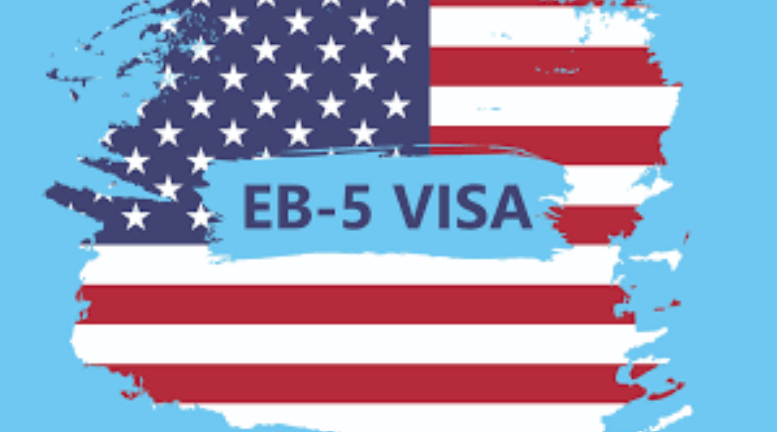EB-5 Resurgence
Kyle Huffman • May 9, 2024
The EB-5 Immigrant Investor Visa Program has long stood as a beacon of opportunity for those seeking to establish roots in the United States. However, in recent years, its allure dimmed due to concerns surrounding integrity, program abuse, and uncertainties regarding its future. Yet, with the passage of the EB-5 Reform & Integrity Act of 2022, the EB-5 program finds itself on the brink of a renaissance, once again capturing the attention of investors worldwide.
For those unfamiliar, the EB-5 program offers foreign investors and their families a pathway to permanent residency in the United States by investing a minimum amount in a qualifying U.S. business venture. This investment must create or preserve a certain number of jobs for American workers. Historically, the program has been popular among affluent individuals seeking not only residency but also the opportunity to contribute to the U.S. economy.
However, in recent years, the program faced criticism and scrutiny due to allegations of fraud, abuse, and inefficiencies. Investors became wary, and the program's popularity waned. Prospective applicants were hesitant to commit significant funds to a program plagued by uncertainties and bureaucratic hurdles.
Enter the 2022 EB-5 Reform and Integrity Act. This landmark legislation addresses many of the concerns that have plagued the program in recent years. Among its key provisions are increased investment thresholds, stricter oversight measures, and reforms aimed at promoting integrity and transparency within the program.
One of the most significant changes introduced by the reform act is empowering the United States Citizenship and Immigration Services (USCIS) to more effectively monitor and investigate potential instances of fraud or abuse. Additionally, the act introduces measures to streamline the application process, reducing bureaucratic red tape and expediting the adjudication of EB-5 petitions, resulting in faster processing for legitimate investments.
The passage of the 2022 EB-5 Reform and Integrity Act has injected new life into the EB-5 program, reigniting interest among investors and immigration stakeholders alike. With its enhanced integrity measures and streamlined processes, the program once again represents a compelling opportunity for those seeking to pursue the American dream.
Already, we are witnessing a resurgence of interest in the EB-5 program from investors worldwide. Developers and regional centers are seizing the opportunity to capitalize on the renewed enthusiasm, presenting a diverse array of investment opportunities across various industries and regions.
Moreover, the EB-5 program's revitalization holds significant implications for the U.S. economy. By attracting foreign investment, the program has the potential to create jobs, spur economic growth, and facilitate the development of communities in need. Furthermore, it underscores the United States' commitment to welcoming and harnessing the talents and resources of immigrant investors.
The passage of the 2022 EB-5 Reform and Integrity Act marks a pivotal moment in the history of the EB-5 program. By addressing longstanding concerns and implementing comprehensive reforms, the act has restored confidence in the program and positioned it for a prosperous future. As investors and developers alike embrace the opportunities presented by the revitalized EB-5 program, we anticipate a resurgence in interest and activity, reaffirming the program's status as a cornerstone of American immigration policy and economic development.
I encourage any prospective investors to meet with one of our skilled attorneys to discuss the possibility of securing permanent residency, and eventually citizenship, through a qualifying investment under the EB-5 Immigrant Investor Visa Program. We look forward to working with you!
This blog is not intended to be legal advice and nothing here should be construed as establishing an attorney client relationship. Please schedule a consultation with an immigration attorney before acting on any information read here.
Kyle Huffman
Similar Posts

Embarking on the EB-5 immigration journey is both a profound personal endeavor and a strategic investment decision. For individuals seeking to make the United States their new home while contributing to its economic landscape, the EB-5 Immigrant Investor Program offers a pathway unlike any other. This program, established by the U.S. government in 1990, provides foreign investors with the opportunity to obtain permanent residency in the United States by investing in job-creating enterprises . However, navigating the complexities of the EB-5 process requires a thorough understanding of its intricacies, requirements, and potential pitfalls. In this guide, we provide a brief overview of the steps and documents involved in the EB-5 immigration process, shedding light on its key components, eligibility criteria, investment options, and procedural steps, empowering prospective investors with the knowledge needed to embark on this transformative journey with confidence. Before selecting a project and making the investment, it is important for an EB-5 investor to meet with an immigration attorney to strategize for the application. It is required to show the Immigration Service that all funds used in the investment were lawfully earned and retained , so your attorney will want to understand where the money for the investment is coming from and where it has been held since it was earned. Once satisfied with the source and tracing of funds, the investor can select a project to invest in. Following the passage of the EB-5 Reform & Integrity Act, certain investment projects have already been pre-approved by USCIS by filing form I-956 and receiving designation as a Regional Investment Center. The required minimum investment is $1,050,000 by default; however, this amount is reduced for investment centers in “Targeted Employment Areas” to $800,000 . After submitting the investment to the regional center, the investor will then work with their attorney to create the I-526 petition. At this stage of the case, it is time to show USCIS the source and tracing of all of the funds used for the investment. The types documentation required in order to show the lawful source and tracing of funds is extremely broad and highly dependent on where the money is coming from in each particular case, but the most common documents include W-2 or 1099 tax forms, federal and state tax returns, bank account statements, purchase and sale contracts from the sale of real estate, stock certificates, loan contracts, inheritance documents, and wire transfer records, among many other possibilities . EB-5 applicants can either process their green cards through USCIS by filing an I-485 application for Adjustment of Status, or process through the consulate in their home country . If already in the United States on another valid status, the Adjustment of Status application can be submitted concurrently with the I-526 petition. If processing through a consulate overseas, the investor will have to wait until the I-526 is approved before beginning the consular process. The primary applicant, along with a spouse and any unmarried children under 21 years of age are able to receive permanent residency through the EB-5 process. At the completion of either process, whether requesting the Green Card within the United States or seeking entry through a consulate, USCIS will issue conditional green cards, with a validity of two years . Within the last three months before the conditional green card expires , the investor and family will need to file an I-829 application for removal of conditions on the green card. At this stage, nearly two years after the investment has been made, the Immigration Service is confirming whether the investment remains in the project and the requisite 10 jobs have been created . Following I-829 approval, the investor and their family will receive permanent green cards, with a 10-year validity. The investor and family will be able to apply for United States Citizenship five years after the initial green card is issued . The conditional green card does count for this purpose, so citizenship will become a possibility approximately 3 years after the permanent green cards are issued. In conclusion, the EB-5 Immigrant Investor Program stands as a unique avenue for individuals around the globe to fulfill their aspirations of living and thriving in the United States. Through strategic investment and dedication to job creation, participants not only secure permanent residency but also contribute to the nation's economic growth and prosperity. However, it is crucial for prospective investors to approach the EB-5 process with meticulous planning, thorough research, and expert guidance to navigate its complexities successfully . By understanding the program's requirements, exploring investment options, and adhering to procedural guidelines, aspiring immigrants can embark on their EB-5 journey with clarity and confidence. Ultimately, the EB-5 program represents more than just a pathway to residency—it embodies the spirit of entrepreneurship, innovation, and opportunity that defines the American dream. If you believe you may qualify for the EB-5 program or if you have any questions, please schedule a consultation with one of our experienced attorneys and we will be more than happy to assist you.

In recent months, the U.S. government has intensified its vetting procedures for individuals seeking entry into the United States, whether through visa applications abroad or inspection at ports of entry. This shift, prioritized by the current administration, is having a noticeable impact on immigrants, visa holders, and even lawful permanent residents (LPRs). At U.S. consulates worldwide, applicants are experiencing increased delays , often being placed into administrative processing under Section 221(g) or referred for Security Advisory Opinions (SAOs) , which can significantly prolong visa issuance. Officers are now engaging in deeper reviews of applicants' backgrounds, including their t ravel histories, social media accounts, and foreign ties . This scrutiny applies to a wide range of visa categories, from visitor visas to employment-based petitions. Importantly, officers are exercising broader discretion when deciding who qualifies for a visa, making the process more unpredictable, even for applicants with strong cases. This enhanced vetting does not end at the consulate. Individuals entering the U.S. — even those with valid visas or green cards — are increasingly subject to prolonged secondary inspections by Customs and Border Protection (CBP). Officers may ask detailed questions about prior immigration history, travel patterns, and social media activity. In some cases, travelers are asked to provide access to their electronic devices for further inspection. There are also growing reports of travelers being referred to deferred inspection or even issued a Notice to Appear (NTA) for removal proceedings, despite previously lawful entries. While some of these practices have existed in the past, the current administration has formalized and expanded them. Experts warn that additional travel restrictions or targeted bans could also emerge as part of the administration’s enforcement priorities. For employment-based applicants, these delays and complications can severely impact U.S. businesses and foreign nationals who contribute critical skills to the U.S. economy. It is more important than ever to be well-prepared before attending a visa interview or traveling internationally. Understanding your rights and preparing thoroughly can help you navigate this uncertain landscape. At Santos Lloyd Law Firm, P.C. , our immigration attorneys are ready to guide you through this evolving process and ensure you are informed, supported, and protected. Please contact us if you have questions or need assistance.

On March 31, 2024, U.S. Citizenship and Immigration Services (USCIS) implemented a policy update that limits gender marker selections on all immigration forms and systems to two biological sexes: male and female. This change eliminates the option for applicants to select a non-binary or “X” gender marker—an option that had previously been permitted on some forms. While USCIS emphasizes that this update does not change who qualifies for immigration benefits, it may significantly impact how certain applications—particularly asylum claims based on gender identity-related persecution—are understood and evaluated. What Has Changed? Under the revised policy, applicants may now only choose “Male” or “Female” when completing USCIS forms. The ability to select a non-binary or third-gender option is no longer available. Applicants may still request to change their gender marker with USCIS, but only within the male/female binary. Supporting documentation, such as medical or legal records, is not required to make the change. This means that transgender individuals can still align their gender marker with their identity—if it falls within the two binary categories—but non-binary individuals are no longer represented. The change follows guidance issued by the federal Office of Management and Budget (OMB), which called for greater consistency in the collection of sex and gender data across federal agencies. Impact on Asylum Applicants This policy update is especially important for individuals applying for asylum based on persecution related to their gender identity. Under U.S. immigration law, asylum is available to people who have suffered persecution—or fear future persecution—based on their membership in a “particular social group.” This includes people targeted for being transgender, gender non-conforming, or otherwise not aligning with socially expected gender roles in their home country. Although the legal standard for asylum remains unchanged, the removal of the non-binary gender marker could make it harder for some applicants to clearly present and document their identity. In asylum cases, credibility and clarity are crucial. The ability to accurately reflect one’s gender identity on official forms can play an important role in establishing the foundation of a persecution claim. Now, applicants who identify as non-binary or outside the traditional male/female categories may be forced to select a gender that does not align with their lived experience. This could lead to confusion in their case file or require additional explanation during interviews or hearings. This policy could weaken the strength of some asylum claims—not because the underlying facts have changed, but because the official forms now fail to reflect the applicant’s true identity. For example: A non-binary person applying for asylum after being targeted in their home country may now have to select “Male” or “Female” on their asylum application, despite not identifying as either. This mismatch may lead adjudicators to question the applicant’s identity, possibly weakening the strength of the claim or requiring added clarification and documentation. In defensive asylum cases—where applicants are in removal proceedings—such inconsistencies could create unnecessary hurdles and complicate the evidentiary presentation. What Can Applicants Do? Despite the change, individuals can still pursue asylum based on gender identity. The underlying eligibility criteria remain the same. However, applicants should be prepared to clearly explain any differences between their stated identity and the gender marker required on USCIS forms. Applicants are encouraged to: Include a personal declaration explaining their gender identity in detail and how it relates to their fear of persecution. Provide evidence such as affidavits, country condition reports, or expert testimony that supports the claim. Work with an experienced immigration attorney who can help present the claim effectively and prepare for any questions that might arise from the new form limitations. The new USCIS policy on gender markers may seem like a technical update, but for asylum seekers fleeing gender-based persecution, it has real implications. While individuals are still legally eligible to seek protection, the limitation to binary gender options could make it more difficult to fully and clearly present their case. If you or someone you know is facing immigration challenges related to gender identity—or is concerned about how this policy may impact an asylum claim—please contact Santos Lloyd Law Firm to schedule a consultation with one of our experienced immigration attorneys. We’re here to help ensure your voice is heard and your case is handled with the care and expertise it deserves.

In 2025, the immigration landscape continues to shift under the weight of national security concerns, ushered in by Executive Order “ Protecting the United States From Foreign Terrorists and Other National Security and Public Safety Threats. ” This directive tasks federal agencies—including the U.S. Department of State—with implementing enhanced screening and vetting protocols for all foreign nationals seeking visas or other immigration benefits. The result? A dramatically intensified vetting process, along with mounting concerns from immigrants, attorneys, and civil liberties advocates alike. Traditionally, airport security focused on verifying travel documents and screening for prohibited items, while consular officers assessed the legitimacy of visa petitions and the admissibility of applicants. Extreme vetting, however, represents a significant shift toward a far more invasive and comprehensive investigative process. It now includes detailed background checks, biometric verification, digital forensics, and expansive scrutiny of an applicant’s online presence and criminal or financial records. Since President Trump’s second term began in January 2025, the implementation of extreme vetting has expanded rapidly. Today, border screenings go far beyond routine document checks, encompassing a full-scale evaluation of a traveler’s digital life. This pivot reflects the administration’s intensified focus on national security, but it has also triggered urgent discussions about privacy, due process, and the fairness of modern immigration enforcement. At U.S. ports of entry—especially airports—noncitizens are now subject to rigorous and invasive procedures, including: Inspection of cell phones, laptops, and other devices (including deleted content) Review of social media activity on platforms like TikTok, Instagram, and X (formerly Twitter) Biometric scanning, including fingerprinting and facial recognition These measures are no longer confined to travelers from high-risk countries. In practice, extreme vetting applies broadly across all nationalities, and increasingly affects lawful permanent residents as well. For noncitizens, this new landscape introduces a heightened level of uncertainty and vulnerability. Delays at U.S. consulates for visa issuance or renewal are becoming routine. Travelers must now be acutely aware of these changes, and those attending consular interviews or seeking visa renewals should be prepared to provide additional documentation verifying their maintenance of status, compliance with visa conditions, and the bona fide nature of their visa applications. It is critical to organize supporting materials in advance and be ready to answer questions about employment, education, travel history, and online activity. As the U.S. government continues to expand its use of data-driven risk assessment tools, travelers must adapt to a new normal, one where preparation is essential to navigating the immigration system without disruption.



